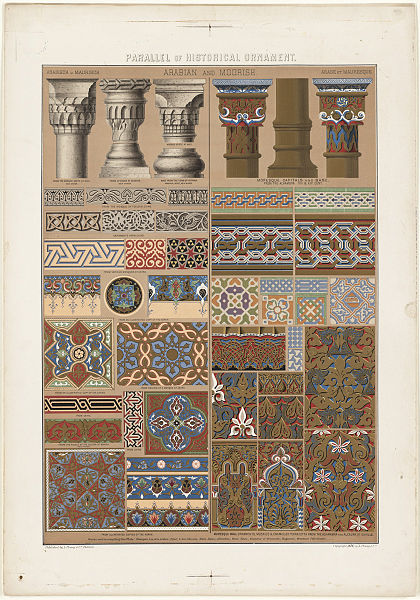
Parallel Construction
Parallel construction, also called parallel structure or parallelism, is something to be aware of when you are writing English. It may not seem like an issue while you are actually writing, but when you reread what you have written – and you should always save time to reread everything you write, even an exam essay when you are pressed for time – it becomes more important. As a point of grammar, parallel construction can make the difference between a sentence that is easy to understand and one that seems to make no sense at all. It is an essential part of writing English clearly. One basic rule to keep in mind is that once you have said something a certain way, your reader will expect you to continue in that way, unless you have a good reason not to. In other words, after you start a sentence in one format, it can be confusing if you suddenly change without apparent reason. That is why remembering about parallel construction is important.
In Thai English, writers often seem to avoid words ending with the letters ing.
Duangkamol likes cooking, eating, and reading.
Another way of saying the same thing would be:
Duangkamol likes to cook, eat, and read.
or
Duangkamol likes to cook, to eat, and to read.
When you have a sentence like one of the above ones, with lots of commas, it is important to keep things uniform. It would be wrong to write:
Duangkamol likes to cook, to eat, and read.
This is wrong because once you make a decision to use the words to cook followed by to eat, then you must follow up by having the third thing agree with the way the words are presented in the earlier part of the sentence. Or if you decided to leave out the word to since it seems a little repetitive, it would also be wrong to write:
Duangkamol likes to cook, eat, and to read.
Once readers see that you have written to cook, eat, then they will simply expect a verb without the word to added to it. If you do add the word to, the result gives a clumsy and careless impression, which is not the best image for any thesis or academic article. It also suggests that whoever wrote it forgot what was written in an earlier part of the sentence, and did not care enough to reread what was written in order to check it. To give the reader the idea that you care about the impression you are making, it is useful to keep this detail in mind when writing. The following would also be wrong:
Duangkamol likes cooking, eating, and to read.
The correct way of writing this, as mentioned above, would be
Duangkamol likes cooking, eating, and reading.

More parallels
As you get more experienced writing English, sometimes writing in the correct grammatical way depends on your vocabulary. If you can think of a word or words that mean the same thing as a wrong alternative, you can substitute them for what would otherwise be a mistake. If you cannot think of an alternative, or cannot manage to Google it, then you may be stuck for a good solution. As long as you realize that there is a problem, it is almost always possible to find some other way of saying the same thing, where you can be sure you are correct. Remember that in any sentence you write, if something seems wrong to you, it is probable that there is a mistake, even if you do not know exactly what it is. Try putting the phrase or sentence between quotation marks and Googling it; you may be given an immediate alternative, based on Google’s auto-corrections. Not all auto-corrections suggested by Google are useful, but many basic issues of grammar, spelling, and other elementary mistakes in English can be resolved by looking at what the rest of world does when writing English. The more choices you have, the more likely it is you will avoid errors.
Students were told to fill in their exam papers carefully, rapidly, and in a way that avoided any errors.
The above sentence, by ignoring parallel structure, looks clumsy. It would be better to write:
Students were told to fill in their exam papers carefully, rapidly, and flawlessly.
Note that all the words describing how the paper will be filled in end with the letters ly. That looks good but also helps the reader, who will expect this kind of symmetry when trying to make sense of your arguments. If you are stuck and cannot think of the word flawlessly, meaning perfect or without errors, do not worry too much. You can say the same thing in a different way. Trying looking online at thesaurus.com, where words are grouped together with similar meanings or opposite meanings. Not every word given in a thesaurus is the right choice for what you mean to say, but seeing a group of words with similar meanings can give you good ideas about different ways of saying the same thing. If something seems too complex to say without making a mistake, there is almost always a simpler way to express it. Read the following sentence:
It was both a long exam and very difficult.
The above sentence is awkward because it does not respect parallel structure. Another way of saying the same thing would be:
The exam was both long and difficult.
Or to make it even easier, you might prefer to write:
The exam was long and difficult.
Often in Thai language, extra words are inserted for effect, such as the word both in the above sentence, when they are not strictly needed. Try an experiment and see if you delete a word, whether the meaning of your sentence is changed in any way. If there is no change in the meaning, chances are the word in question is not essential and can be eliminated with no loss to your writing. Another example:
The durian fruit was large, ripe, and did not smell good.
This is poor parallel structure, and would be better stated:
The durian fruit was large, ripe, and smelly.
Instead of adding an extra verb at the end of the sentence, distracting from the main verb, to be, we add a third adjective to go with the two adjectives listed before.

Parallel structures in history.
These are real-life examples of noted speeches or writings in English using parallel structures:
Ask not what your country can do for you, ask what you can do for your country.
- President John F. Kennedy.
The inherent vice of capitalism is the unequal sharing of blessing; the inherent virtue of socialism is the equal sharing of miseries.
- Winston Churchill.
…and that government of the people, by the people, for the people, shall not perish from the earth.
— President Abraham Lincoln, Gettysburg Address.
If you are idle, be not solitary; if you are solitary, be not idle.
- Samuel Johnson.
Great minds discuss ideas. Average minds discuss events. Small minds discuss people.
- Eleanor Roosevelt.
It was the best of times, it was the worst of times, it was the age of wisdom, it was the age of foolishness, it was the epoch of belief, it was the epoch of incredulity, it was the season of Light, it was the season of Darkness, it was the spring of hope, it was the winter of despair.
-Charles Dickens, A Tale of Two Cities.
You have modernized your economy, harnessed your rivers, diversified your industry, liberalized your trade, electrified your farms, accelerated your rate of growth, and improved the living standards of your people.
– President John F. Kennedy, Address to the Irish Parliament
Without parallel structures, the phrases above would be much less satisfying and memorable. Their structure sticks in the minds of readers. When you write using parallel structures, your thesis or academic article can also make a good impression.
Parallel structures in everyday expressions:
Like father, like son.
Easy come, easy go.
Buppha enjoys television shows that have romantic characters, wild adventures, and excellent actors.
If you look closely at what is going on in a sentence, you will notice when something does not follow an established pattern. For example:
Returning to Tha Prachan campus on Class Reunion Day, Chailai had memories of drinking endless Thai ice teas, eating Pad Thai noodles in the cafeteria, and sugary desserts.
The sentence above has a problem because Chailai’s memories include verbs for Thai iced tea and Pad Thai, but there is no verb when desserts are mentioned. By adding a verb to this part of the sentence, we correct the lack of parallelism:
Returning to Tha Prachan campus on Class Reunion Day, Chailai had memories of drinking endless Thai ice teas, eating Pad Thai noodles in the cafeteria, and enjoying sugary snacks.
As often in writing English, even the above correct sentence may be rewritten to be shorter and more direct. By choosing the verb enjoying to apply to all the food and drink consumed by Chailai, we save space. Readers will know that it is necessary to drink Thai iced tea and eat Pat Thai noodles to enjoy them, so these verbs are not necessary:
Returning to Tha Prachan campus on Class Reunion Day, Chailai had memories of enjoying endless Thai ice teas, Pad Thai noodles in the cafeteria, and sugary snacks.

(Images courtesy of Wikimedia Commons)
